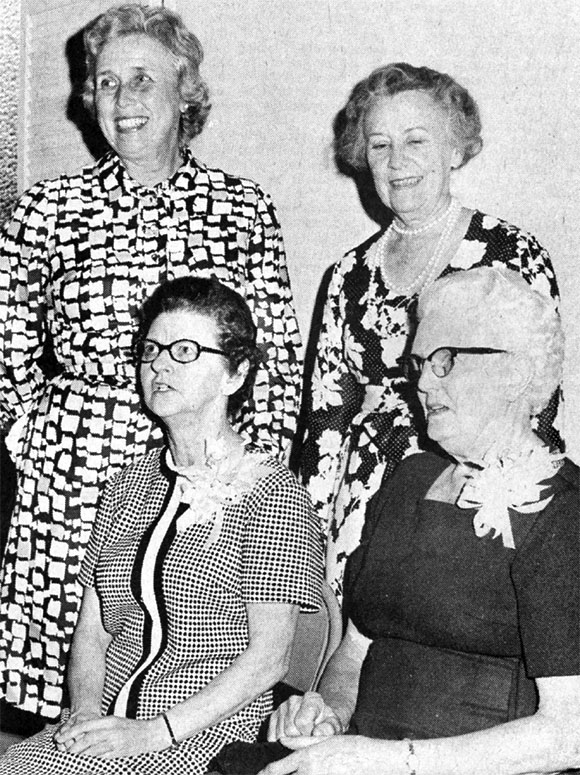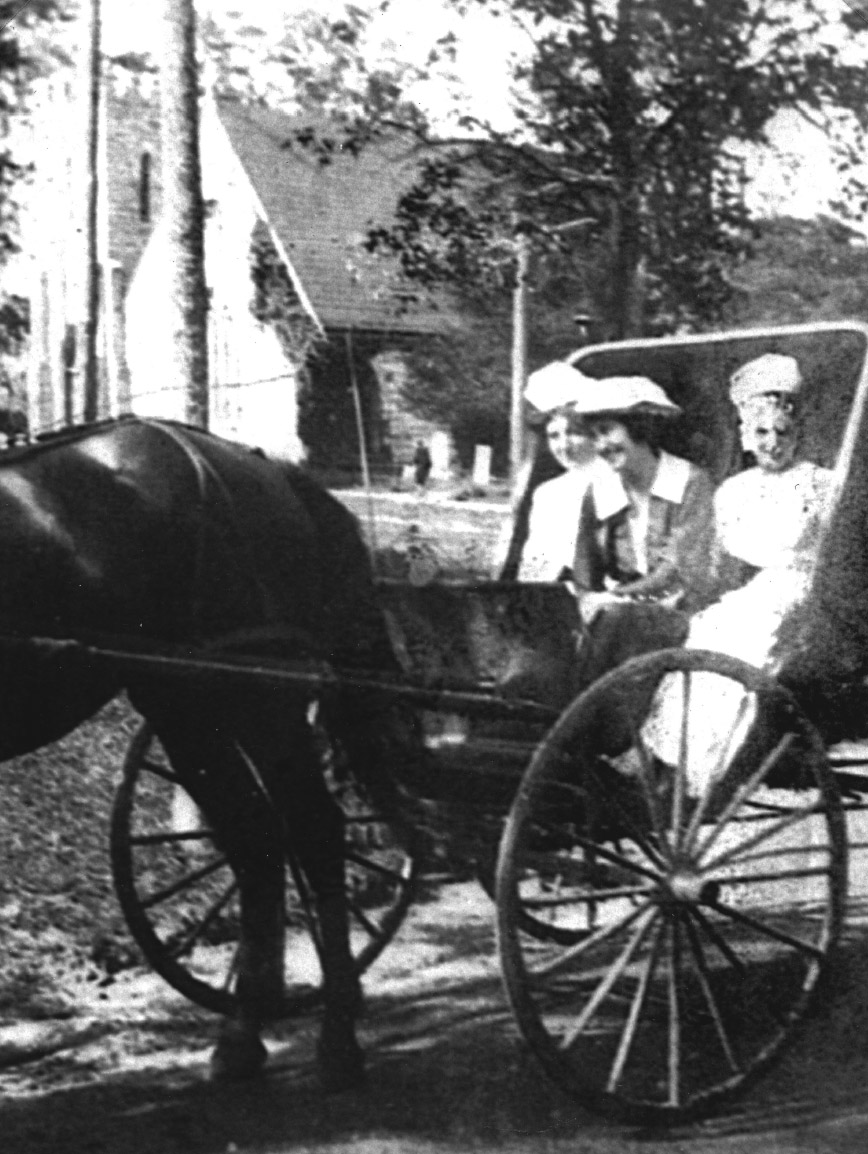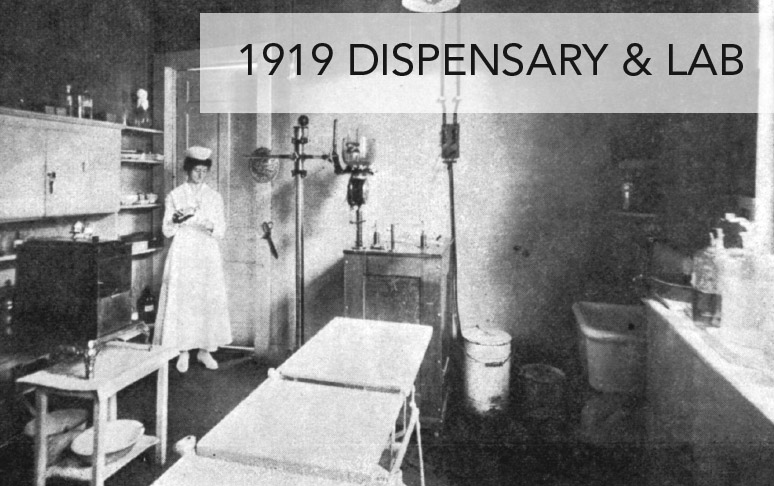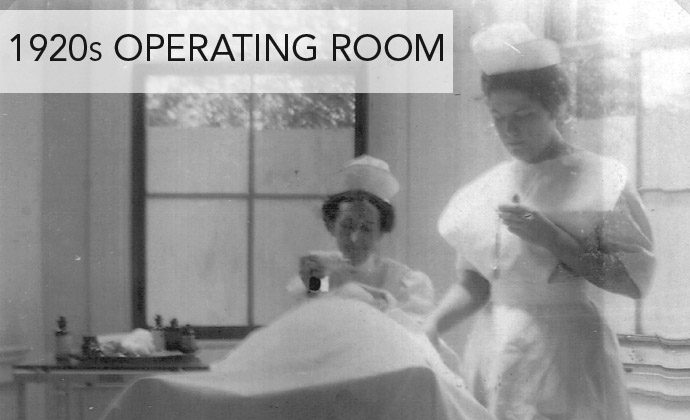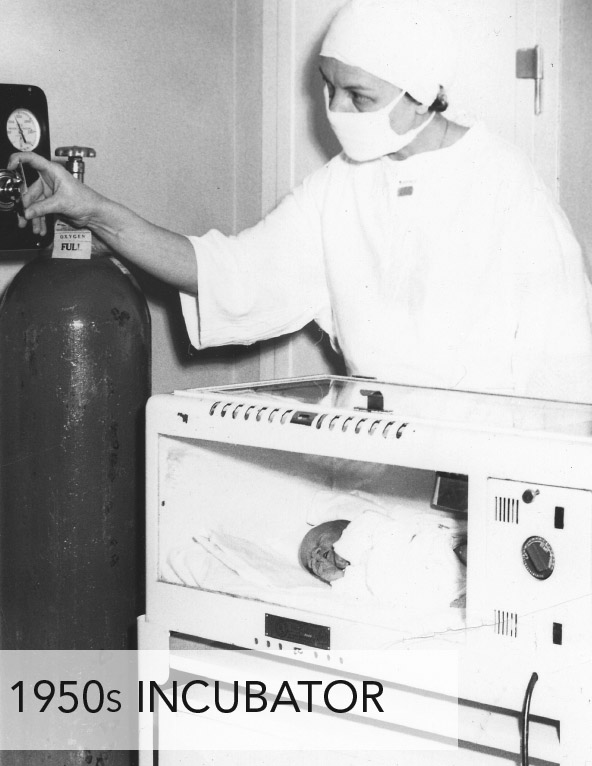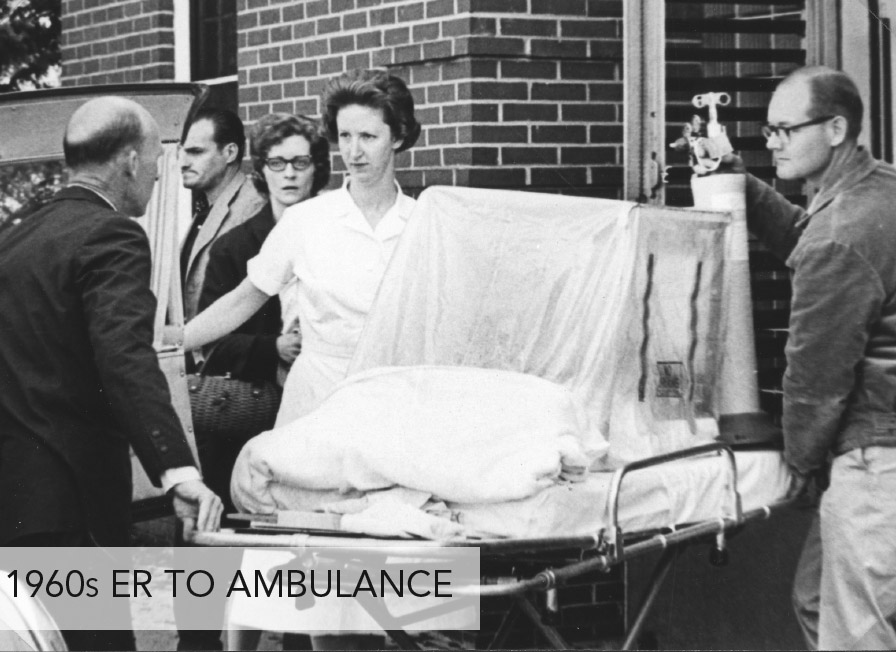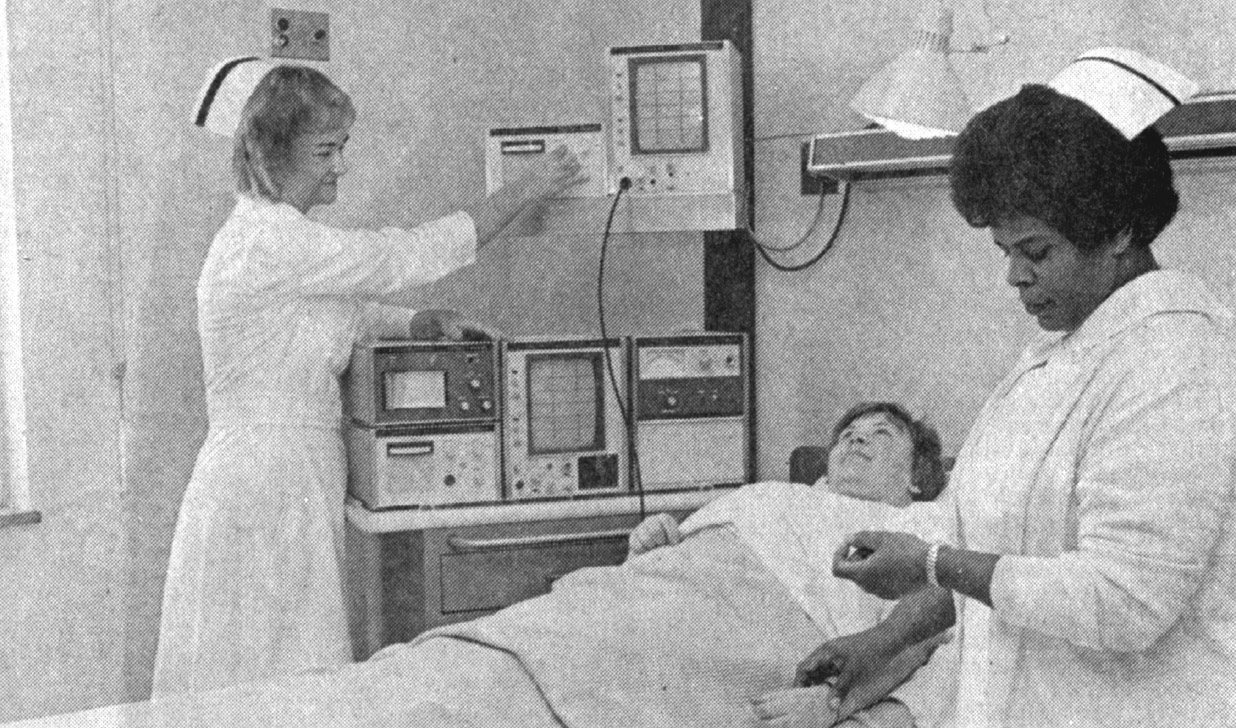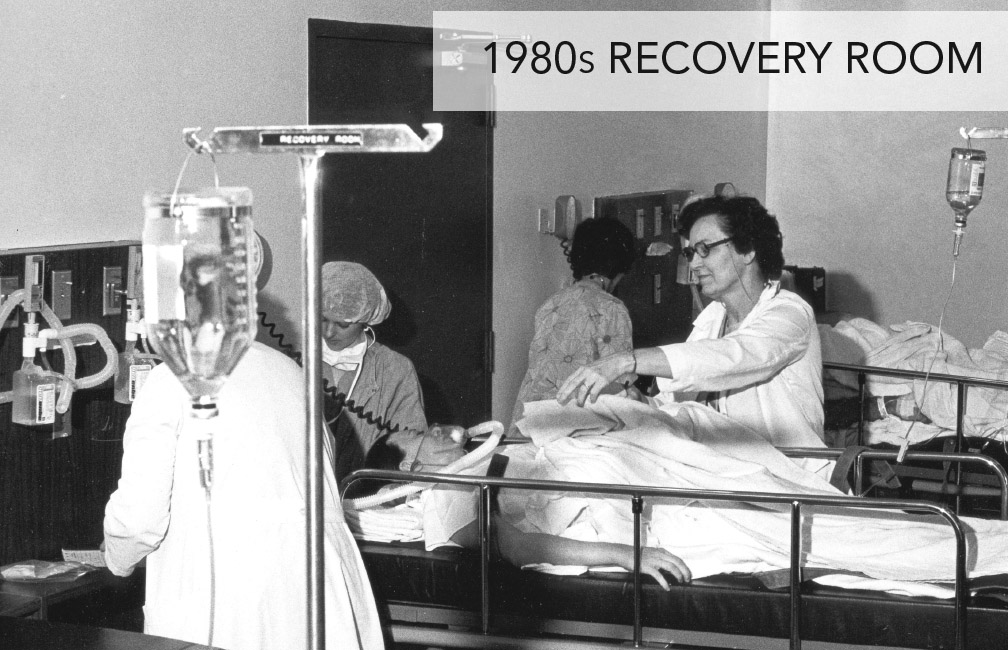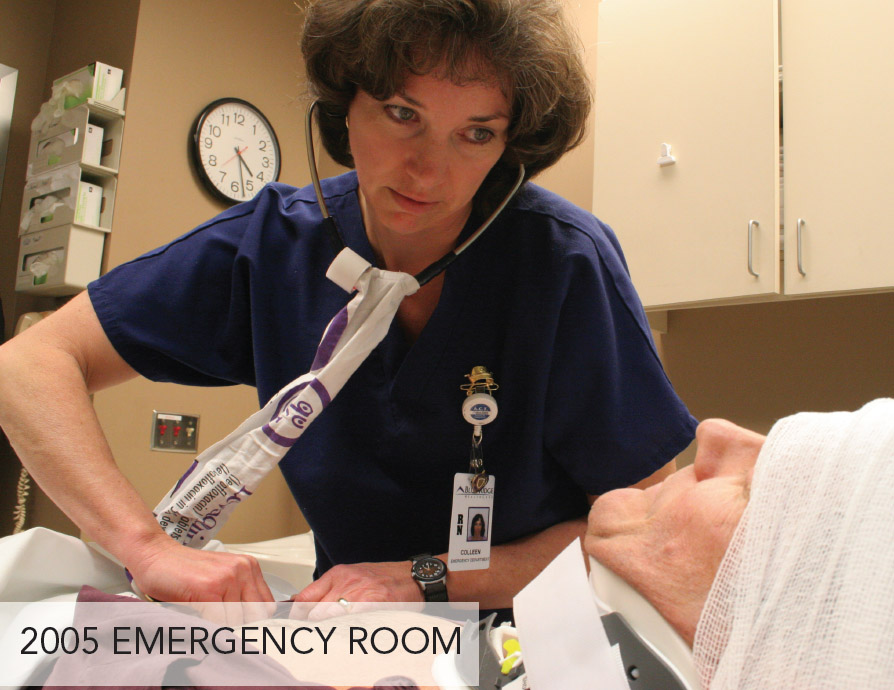|
|||
Grace Hospital - History of Our Nurses - (Back to History Wall Main Page) |
|||
TimelineFROM 1913-1914 ANNUAL REPORT 1924
Other nurses said Miss Rust was a pillar of strength and efficiency, and that she could work all day all over the hospital but still look immaculate at the end of the day. She was Dr. Phifer’s assistant, going out into the country with him carrying a little black bag of her own. She would ride to the gate and then walk into the house, regardless of rain, sleet or snow. When America entered World War II, Miss Rust and other Grace Hospital Nursing School graduates answered the call for nurses. She resigned as superintendent in April of 1943 to enlist in the U.S. Navy Corps. Following the war, Miss Rust resumed her nursing career first in Asheville then returned to Grace Hospital where she served as central supply supervisor from 1962 until her retirement in 1971. During the latter part of her life, she lived beside the hospital at 305 College Street. (Grace Hospital at that time was located at 401 College St.) The Grace Hospital Board of Trustees honored Miss Rust by naming quadrant 4-B in the new hospital for her in a ceremony of dedication on May 20, 1974. Units were named for outstanding nurses who had served in the hospital including Myrtle Berryhill, Maria Allen and Alice Wood Wilds. Miss Rust died in June 1979.
In the 1940s, the concept of using anesthesia became more acceptable. The first anesthesia machines were large and emitted fumes into the air, often “anesthetizing” everyone in the room. Soda lime absorbers were used to draw in the ether and other gases used in anesthesia to prevent release in the room. FROM 1940 ANNUAL REPORT
She was determined to get an education and attended the Kistler Academy for Colored Students and then attended a one room school on West Concord Street before graduating from Olive Hill High School. She attended St. Agnes School of Nursing in Raleigh, N.C., graduating with an RN degree in 1933. She returned to Morganton to care for her aging parents and worked in both Dr. Kibler’s office and at the Grace Hospital Colored Unit. In 1941, she married Leonard Lindsay Lattimore, the proprietor of East Union barbershop. The outgoing and easy-going Mr. Lattimore was selected to be the first barber at the new Western Carolina Center. The couple had one child, Perry Lindsey Lattimore. In 1941, Mrs. Lattimore moved to New York and joined the staff of Bellevue Hospital but returned to Morganton in 1943 to care for her terminally ill brother. She worked at Grace Hospital for 25 years and then at Broughton Hospital for 13 years until her retirement in 1976. Like her husband, Mrs. Lattimore was widely respected across racial lines and her reputation for competency well established in the medical community. Mrs. Lattimore died on June 29, 1985. FLORA HARRILL STINES
In 1961, Dr. Farthing was recruited as a consultant and later became the Educational Director for Grace Hospital School of Nursing. The first graduating class with a BSN was 1964. Under Dr. Farthing’s leadership and hard work, and the dedication of its faculty, the School of Nursing received national accreditation in 1969. Dr. Farthing instilled the desire to seek knowledge, excellence and leadership in all her students. When she retired in 1978, Dr. Farthing’s nursing program was one of the most successful in the state. Ten percent of Lenoir-Rhyne’s nursing graduates would go on to earn a Master’s degree in nursing. Dr. Farthing served for three years on the State Nursing Board, was inducted in to Delta Kappa Gamma, the national nursing society, and belonged to the American Association of University Women. In October, 1985, she received the Appalachian State University’s Distinguished Alumni Award. She died Aug. 5, 2000. |
Nurse’s Passionate Appeal Results in Donations to Build HospitalMaria Purdon Allen was born in Pennsylvania in 1868. She graduated from Protestant Mission Hospital of Philadelphia and arrived in Burke County in 1903 to serve as nurse to the Episcopal Church missions in Western North Carolina. Her father was an Episcopal minister and her stepmother a nurse.
Miss Allen was distressed by the poverty and illness she saw and, in January 1905, wrote an article in a church publication called “The Spirit of Missions” about a need for a hospital in the area. The article, “The District Missionary Nurse in a New Field,” begins with: “One of the most pathetic features in the lives of the mountain people in North Carolina is their passive endurance of the suffering, poverty, the hopeless monotony of their lives.”
She writes about a woman suffering from this disease with three children who are dirty and dressed in rags, with a husband just recovering from fever. The home, hopelessly dirty had two beds, two chairs and a table. Cooking was over an open fire. “They had no money, no food, and hardly enough clothes to cover them. This case, and many others just as distressing, illustrate the great need of a hospital here in Morganton ($3,000 I estimate would build it), where, if there is a case demanding immediate operation, it must be sent to the nearest hospital, fifty or sixty miles away. Many who need surgical attention or constant nursing simply do without.” The article made an impression on Kate Forrest Gray of New York, wife of the Rev. George Zabriskie Gray, and she sent the entire amount estimated by Miss Allen - $3,000. She later sent $1,000 more for the Colored Ward and its furnishings. Mrs. Gray died shortly afterward on Oct. 12, 1905. She was a generous philanthropist and her interest in medical missions may have come about because her son, George Z. Gray Jr., 22, died in England from acute appendicitis. She was an active member of Grace Church in New York, and one hospital annual report says Grace was named for this church, and not Grace Episcopal in Morganton. Another report says Mrs. Gray donated the money in memory of her daughter, Grace. In 1908, Miss Allen advocated purchasing a small cottage to use as a nurses’ home because many of the nurses were sleeping on the porch of the hospital. In 1910, Miss Allen organized the Grace Hospital School of Nursing after seeing there were not enough nurses to care for the sick. The school had a rich tradition of high standards of service and educational growth maintained for nearly five decades. In 1960, Grace combined with Lenoir-Rhyne College to offer a four-year program in nursing, thus ending the autonomous school. In 1921, Miss Allen founded the Grace Hospital Alumnae Association which remains active today - almost 100 years later. In addition to her local work, Miss Allen served as an examiner for the North Carolina Board of Nursing (1909-1911, 1915-1917) and was president 1917-1919. She served as Director of Nurses at Grace Hospital until 1924. Miss Allen never forgot her roots and held chapel services daily to honor the memory and philosophy of Mrs. Hughson. She worked for a small salary of $20 per month only to spend it on the needy or purchase supplies for the hospital.
Zonie Coffey Houston was born in Caldwell County on May 11, 1908. She was educated at Arden High School, an Episcopal school in Buncombe County, and in 1929 graduated from the Grace Hospital School of Nursing. She then began working at Grace Hospital as a general duty nurse. In 1940, she accepted a Kistler Scholarship to study medical technology at the Northwest Institute of medical Technology in Minneapolis, MN. In 1941, she attended Cook County School of Radiology to study X-ray technology. On returning to Grace Hospital she worked full time in the radiology department. The advent of World War II created a nursing shortage. Mrs. Houston became assistant to the Miss Irene Rust, the Director of Nursing, succeeding Miss Rust as Director when she resigned to enlist in the Navy in 1943.
“I didn’t realize that Mrs. Zonie Houston, our Director of Nursing, would have such an impact on my professional life,” said Marinetta Harris Fisher, RN, a 1958 Grace Hospital School of Nursing graduate, in the book Grace Sisters. “From her, I learned the importance of nurses wearing white uniforms, caps and crosses, white stockings, clean white nursing shoes, legible name tags, no tattoos, one watch, one ring, one stud in each ear and no other piercings! I recall one morning she sent a head nurse home because she didn’t have her cap on. She was definitely our mentor.” The Grace Hospital School of Nursing Alumnae Association recognized Miss Houston in 1975 by establishing a scholarship in her honor. She was an ardent supporter o the establishment of the Lenoir-Rhyne College Nursing Program in conjunction with Grace Hospital in the early 1960s when the program began. In 1978, she was honored again, along with another graduate of the School of Nursing, Helen P. Strother, RN. The hospital trustees named nursing quadrants 3-A for Mrs. Houston and 3-D for Mrs. Strother. During the ceremony, former hospital administrator Stanley Moore paid tribute to Mrs. Houston saying she held perhaps the greatest variety of titles and duties of any one person in Grace’s history. “Hers was a career and personality that drew to her love and recognition in the community as well as the hospital,” he said.”She has had a rich, unselfish career.” She was honored as Morganton Woman of the Year in 1959, and retired in 1978 after 45 years of service to Grace Hospital. She died on Feb. 5, 1991. Myrtle Berryhill, Class of 1939, Ran Operating Room for 32 Years
“Miss Berryhill never failed to report for duty if any unusual circumstances demanded her presence. I believe I can certify that because of her close proximity to her work and her unfailing devotion to duty, a number of lives were saved and catastrophic illnesses avoided. “As long as she was in charge of the operating room, she served as supervisor, performed the clerical and secretarial chores and always circulated in one and many times two operating rooms simultaneously. These various duties now require the full time and attention of either three or four persons. “In the operating room, Miss Berryhill proved herself to be quick, strong and courageous. She was a true professional. Always courteous and always a lady, she expected The 1962 Silver Cross yearbook for the School of Nursing dedicated that year to Miss Berryhill, “our friend and our example. We esteem her for her character and leadership; we admire her for her patience and understanding; we honor her for her truly dedicated service to her profession and we thank her for her inspiration.” Nell Morris Causby, RN, a 1952 graduate of the Grace Hospital School of Nursing, said, “Miss Myrtle Berryhill was our guardian angel. She taught us the proper way to clean and package instruments to be autoclaved, as well as washing, checking gloves for holes, powdering and wrapping them to be autoclaved. We were instructed on the proper way to scrub our hands and forearms, put on sterile gowns and gloves and how to hand the correct instruments to the surgeons.” Miss Berryhill died in 1975. Five Hospital Quadrants Named for Nurses
Grace Hospital paid tribute to five women for their long and dedicated service on May 20, 1974. The hospital named five nursing quadrants of the hospital in honor of the women who served in supervisory capacities for many years. This article appeared in The News Herald: Mary H. Hughson, co-founder of Grace and general manager for 16 years. “Whenever Mary H. Hughson’s name is mentioned by anyone who knew her or about her, it is with gratitude and happy memories of her contribution to the life and work and healing ministry of Grace Hospital,” said the Rev. John W. Carter, rector of Grace Episcopal Church. Annie Laurie Farmer Peterson, RN, who trained under Mrs. Hughson, was also recognized as one of the oldest living alumnae of the nursing school. She wrote a tribute to Mrs. Hughson saying, “She was very often referred to as an angel of mercy, which indeed she was to so many people especially the less fortunate ones. She always had time, rather, made time, to help anyone who was in need. Mrs. Hughson was not only business manager of Grace Hospital, she taught the students, was the dietitian, preparing all special diets, did the buying of foods and did a great deal of the cooking.” Maria Purdon Allen, RN, founder of Grace School for Nurses, served 18 years as superintendent of nurses. Miss Allen was recognized as one of the best trained nurse in the state in her day. Lula Roper, RN, retired from the hospital nursing staff and also the oldest living graduate of the Grace School of Nursing at the event, had high praise for Miss Allen under whom she trained and worked. “She was a consecrated Christian. She was a wonderful person. I can’t think of any words to describe Miss Allen. She was one of the best person I have ever had the privilege of knowing.” She said Miss Allen’s father was a minister and her stepmother a nurse, and in her training of the nurses she never left her religion but incorporated it into her working with young nurses. Alice Wilds, RN, second superintendent of nurses, graduate of the Grace School for Nurses. Mrs. A.B. Stoney, hospital trustee gave the tribute to Miss Wilds. “She was not only a dedicated nurse but a true friend to all. She was aware of the individual needs of each patient. Her day did not end at 7 o’clock when it was supposed to. If any were very ill or on the critical list she was on the floor to check on them any time during the night.” Irene Rust, RN, third superintendent of nurses, served as central supply supervisor for nine years. “She is the only person I ever saw who could work all day, all over Grace Hospital and at the day’s end still be immaculate and as pretty as a picture,” said Mrs. G.M. Billings, chairman of the Grace Hospital Guild. Miss Rust was the first Burke native to lead nursing at the hospital. “She was a living example to all the students who trained under her.” Myrtle Berryhill, RN, served operating supervisor for 32 years. “Miss Berryhill never failed to report for duty if any unusual circumstances demanded her presence,” said Dr. E.W. (Ned) Phifer Jr., a member of the Grace medical staff. “I believe I can certify that because of her close proximity to her work and her unfailing devotion to duty, a number of lives were saved and catastrophic illnesses avoided.” “As long as she was in charge of the operating room, she served as supervisor, performed the clerical and secretarial chores and always circulated in one and many times two operating rooms simultaneously. These various duties now required the full time and attention of either
|
||


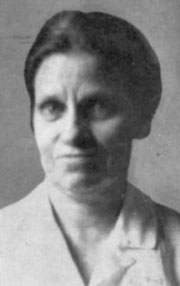 Alice Wood Wilds, one of the first graduates, takes over as director. She is the first graduate of the Grace School of Nursing to serve as director and she held the job until 1937 when she resigned. She was on 24-hour call duty for any emergency since there was no night supervisor. Miss Wilds kept alive the tradition of daily prayer begun by Mrs. Hughson. Alice Wilds’ sister, Deaconess Ruth Wilds, guided the hospital through the transition period following Mrs. Hughson’s death.
Alice Wood Wilds, one of the first graduates, takes over as director. She is the first graduate of the Grace School of Nursing to serve as director and she held the job until 1937 when she resigned. She was on 24-hour call duty for any emergency since there was no night supervisor. Miss Wilds kept alive the tradition of daily prayer begun by Mrs. Hughson. Alice Wilds’ sister, Deaconess Ruth Wilds, guided the hospital through the transition period following Mrs. Hughson’s death.
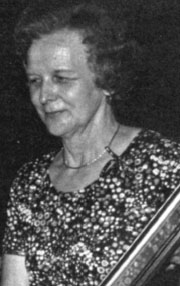 1939
1939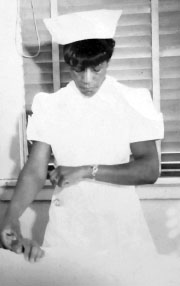
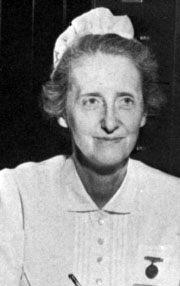 (1911-2000)
(1911-2000)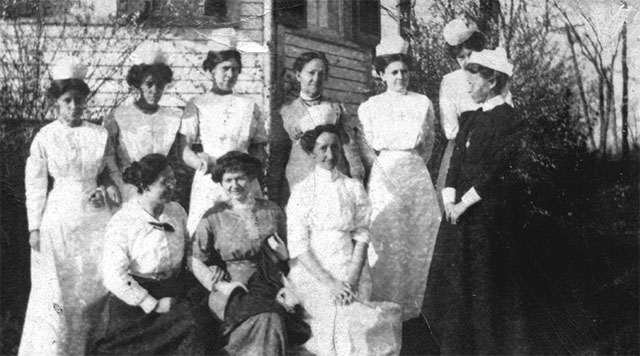
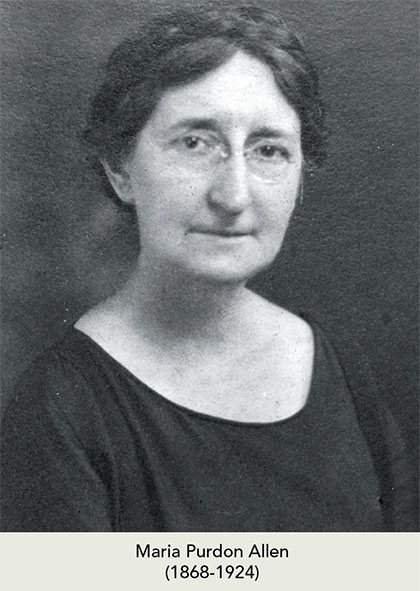 Miss Allen goes on to give examples of poor sanitation and eating habits of the residents. “The peculiar disease belonging to parts of North Carolina and several of the Southern States — the condition of the so-called “dirt-eaters” or “clay-eaters,” characterized by an extreme pallor and weakness, with indigestion, and caused by a parasite, the ‘hook-worm,’ is one that could be cured by careful treatment and oversight. It can be prevented only by cleanliness, a condition unknown to them.”
Miss Allen goes on to give examples of poor sanitation and eating habits of the residents. “The peculiar disease belonging to parts of North Carolina and several of the Southern States — the condition of the so-called “dirt-eaters” or “clay-eaters,” characterized by an extreme pallor and weakness, with indigestion, and caused by a parasite, the ‘hook-worm,’ is one that could be cured by careful treatment and oversight. It can be prevented only by cleanliness, a condition unknown to them.”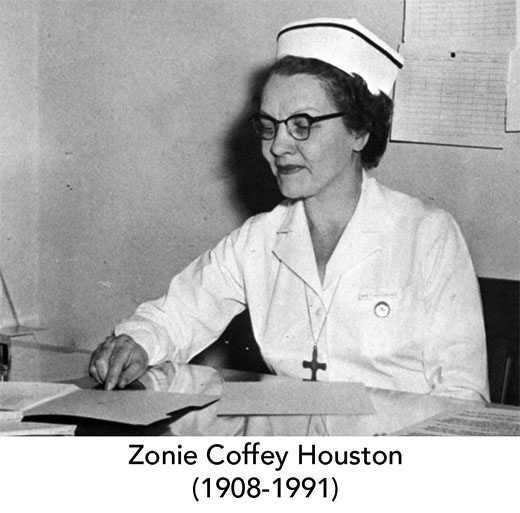
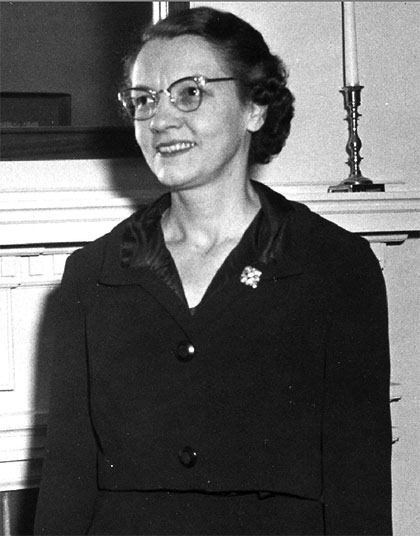 Mrs. Houston served as Director of Nursing Service at Lincoln County Hospital in Fayetteville, NC, from 1946 to 1950 before returning to Grace Hospital where she served in a variety of positions including supervisor of obstetrics and another stint as Director of Nursing from 1957 to 1960.
Mrs. Houston served as Director of Nursing Service at Lincoln County Hospital in Fayetteville, NC, from 1946 to 1950 before returning to Grace Hospital where she served in a variety of positions including supervisor of obstetrics and another stint as Director of Nursing from 1957 to 1960. 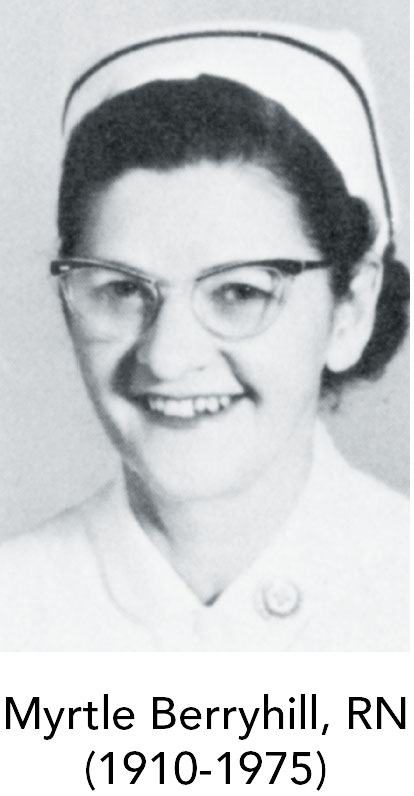 Myrtle Berryhill, born in 1910, was a graduate of the Grace Hospital School of Nursing and operating room supervisor for 32 years until her retirement in 1972. Dr. E.W. Phifer Jr., said of Miss Berryhill:
Myrtle Berryhill, born in 1910, was a graduate of the Grace Hospital School of Nursing and operating room supervisor for 32 years until her retirement in 1972. Dr. E.W. Phifer Jr., said of Miss Berryhill: